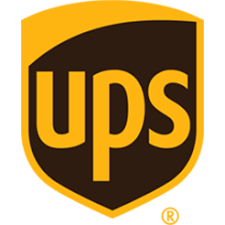 By Susan Li, UPS
By Susan Li, UPS
When unplanned events such as weather delays cause product spoilage, it’s easy for healthcare executives to react by instituting an across-the-board increase in insulating material.
But a thorough evaluation of the supply chain may reveal a better solution to managing cold-chain packaging costs – one that could deliver savings, improve efficiency and possibly create better outcomes for patients.
Over time, it’s natural for inefficiencies to inadvertently creep into the supply chains at even the best-run healthcare companies. Decision-makers at these companies may have turned their focus to core issues like research and development – and may not be aware of the advanced methods for delivering their products.
But by considering the wide range of variables that make up the supply chain — including packaging, delivery speed, environmental data about shipping lanes and pack-out requirements — healthcare companies can make adjustments that enhance logistics, reduce spoilage and damage, improve space utilization and optimize transportation assets.
Reviewing the Processes
Finding the right solutions begins by establishing a group of experts with a strong understanding of your business. Typically, this group should include product managers, operations and warehouse personnel, logistics planners and packaging suppliers. Individually and as a team, this group can perform a thorough evaluation of your supply chain and identify areas that could be improved.
This group should start by documenting the flow of packages and their contents. As the process map is built, it will become clear that product, packaging and transportation are part of a symbiotic relationship. Close attention should be paid to the following:
- Dimensional weight of packages, which determines the cost of shipping large – but light – packages.
- Product ordering, storage and handling. It’s important to assess product ordering patterns to determine the location of the majority of units shipped. Also determine any seasonality in ordering patterns.
- Outer shipping containers and packaging failure information. By improving the ratio of product payload-to-shipping case size, it’s possible to reduce the transportation cost of total units shipped. If payload and shipping cases show a higher-than-anticipated rate of failure in transit, laboratory testing may be needed to dig deeper into the root cause in order to find solutions.
- Specific cold-chain considerations. Start by examining the typical failures found most often at the end of the supply chain, such as contamination or freezing. Typically, 20 percent of issues account for 80 percent of the problems.
- Packaging types, testing and sustainability. All packaging should be assessed against shipment, product and transit needs. Any custom solution also needs to consider temperature criteria, anticipated time in transit, size, weight and other design constraints. Ambient temperature, shipping lane profile and payload space also factor into this evaluation.
Once all data have been collected, laboratory testing can create models that will predict how the packaging will perform under adverse conditions. The lab analysis should include component, vibration, drop, shock and environmental tests.
Assessing Performances
Finally, assess package performance against real-life conditions. These include:
- Ambient temperature along the package delivery route can directly affect the temperature stability of contents inside the package. Many transportation companies have worked with the International Safe Transit Association to develop temperature profiles for various products and supplemented this data with additional research from individual logistics companies.
- Consideration of pack-out and refrigerants. Information about the transit route, handoffs and the amount and condition of refrigerants to be used in pack-out can be determined with a high degree of accuracy.
- Shipping service level and time in transit. The longer a cold-chain package is in transit, the more refrigerant or phase-change material is needed to lower its possible payload. Longer transit times increase the per-unit cost of shipping a cold-chain product and may increase the complexity of the pack-out. In such cases, a faster shipping option with less packaging, insulation and refrigerant may be a better option.
Healthcare manufacturers should continually look for ways to optimize their cold-chain packaging. The benefits can be far-reaching, starting with increased efficiencies and cost savings and extending to safer transportation of pharmaceutical goods and medical devices that improve the quality of lives.
